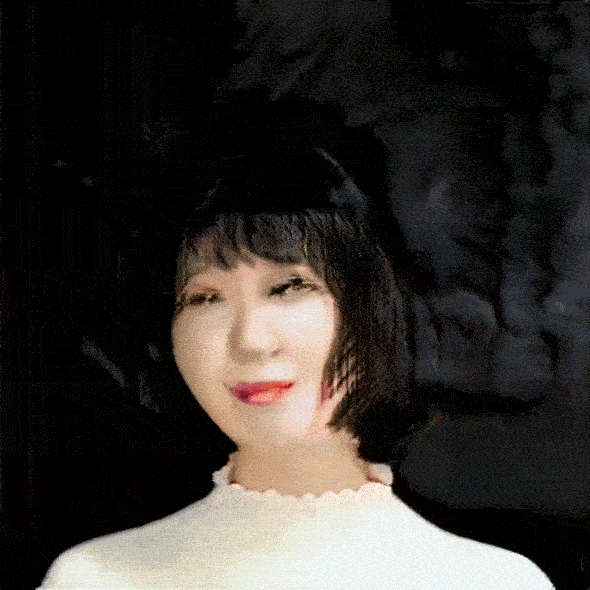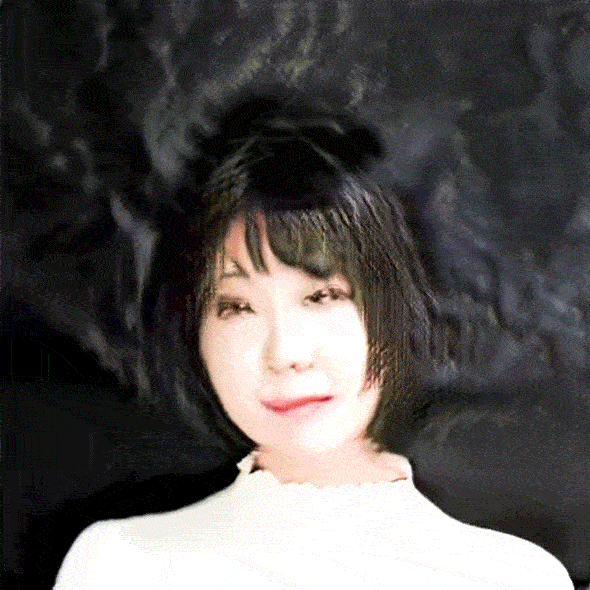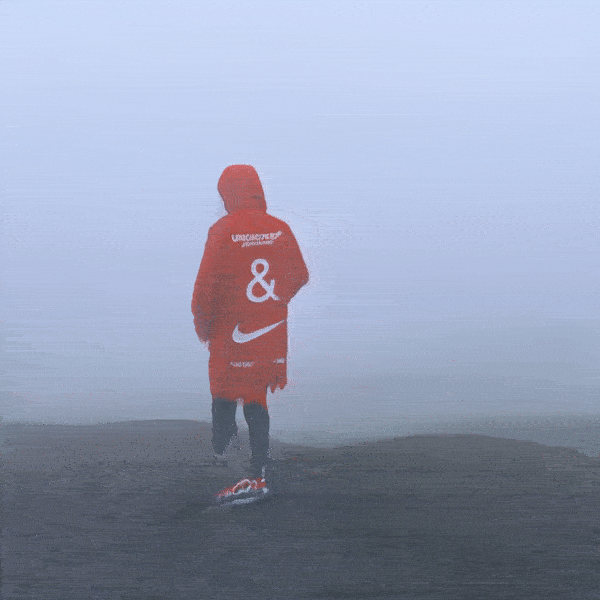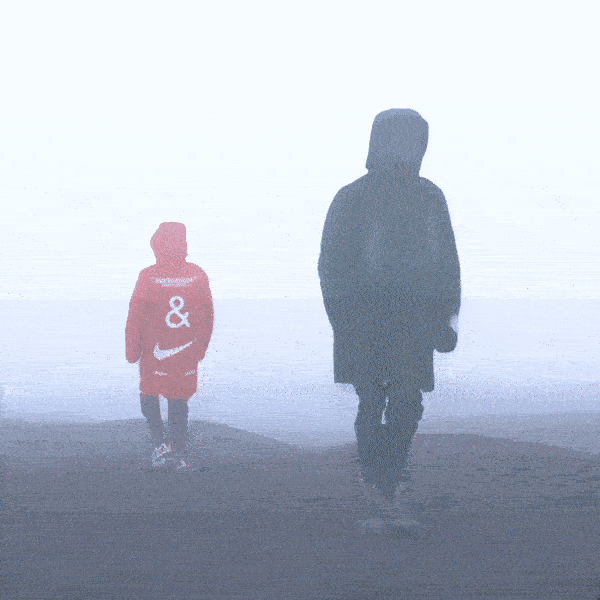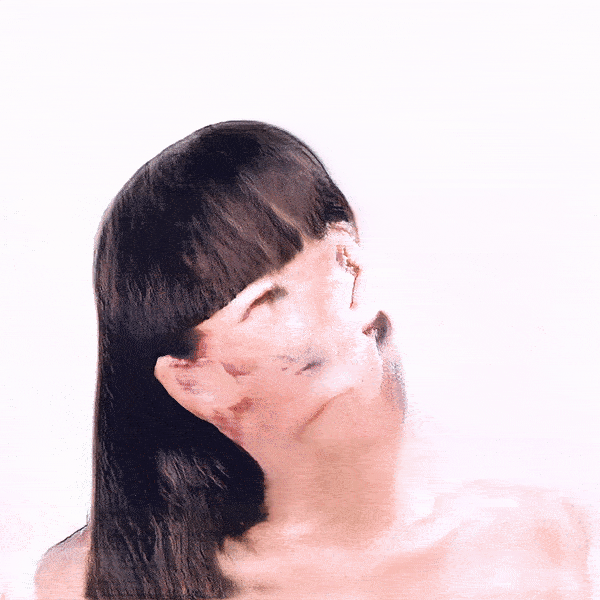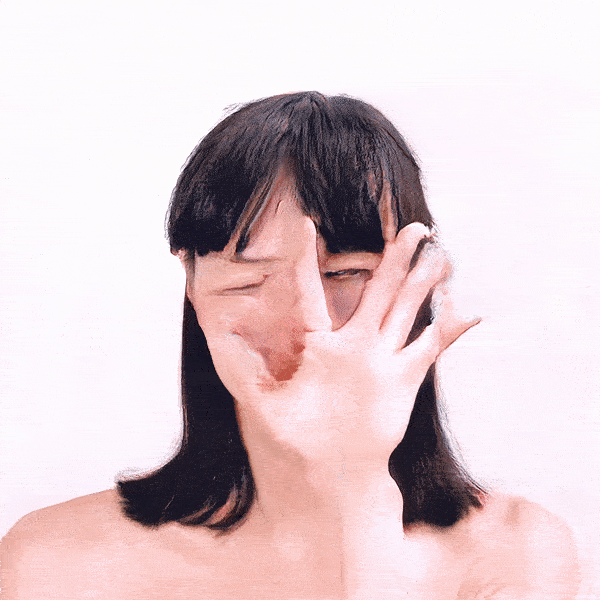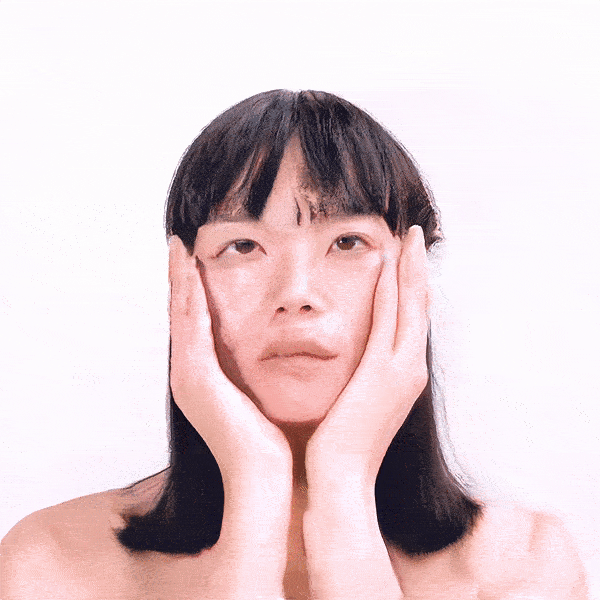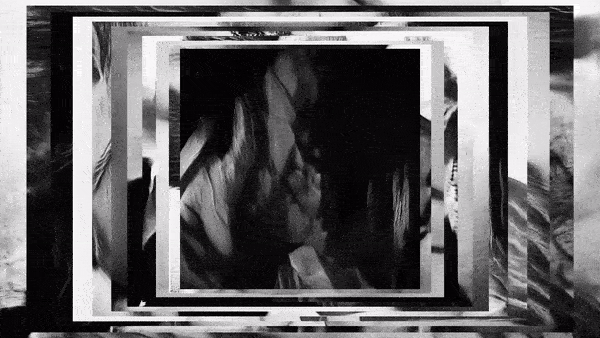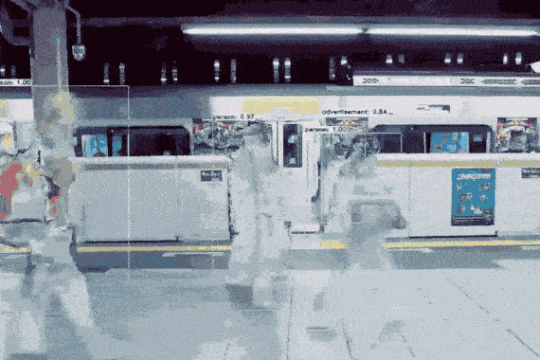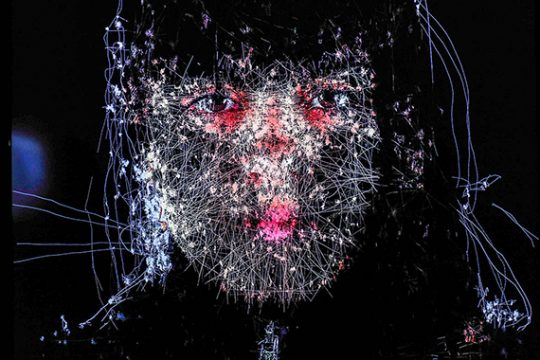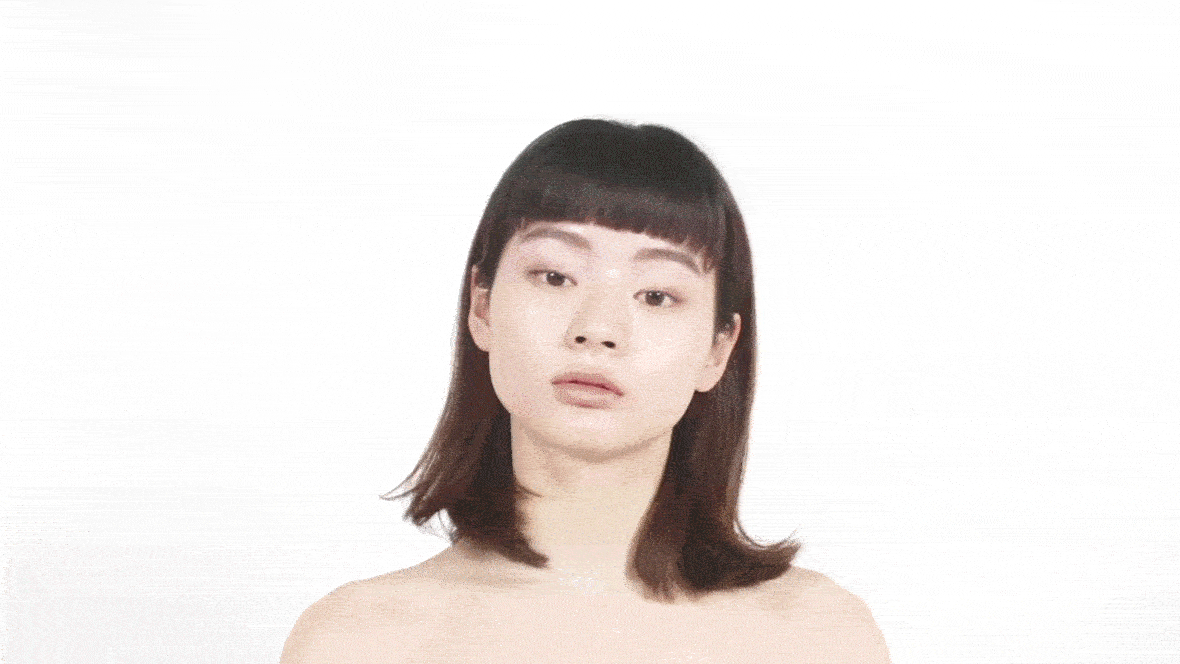
For Kishi Yuma, artificial intelligence is a kaleidoscope through which we can see humanity from dazzling, unexpected perspectives. At times the Japanese artist’s works can be unsettling, with human faces contorting into unnatural positions. But it can also be profoundly soothing, with a flower bouquet morphing seamlessly into a woman in a pastel dress and back again.
Despite the capabilities of AI, There’s a certain anxiety surrounding the technology, rooted in the fear that sentient systems might replace us. Kishi sees the current state of AI differently: “I define AI not as something that imitates human intelligence, but as something completely alien that crafts from an entirely original point of view.”
人工智能 (Artificial Intelligence,简称 AI) 对于日本艺术家 Kishi Yuma 来说就像万花筒,向镜头中望去,人类的面目也变得眩眼、匪夷所思起来。有时候,人的五官在他的作品中被拉扯成各种不自然的样子,令人非常不安;另一些作品却又令人身心舒畅,就像女人和花束之间的瞬息万变。
虽然 AI 功能强大,但很多人对于这种技术仍有顾虑,担心有一天人类将会被超感知系统取代。Yuma 对 AI 却有不同的看法:“我并不觉得 AI 是在模仿人类的智慧,相反,我觉得 AI 之所以那么特别,是因为它本来就诞生于一个全新的视角。”
Kishi, based in Tokyo, is an AI researcher and artist who seeks to better understand what technology can teach us about ourselves. Though AI art is still far from mainstream, he has recently worked with high-profile clients such as Vogue Italia and Nike, signalling that its widespread use may not lie too far in the distant future. In working on these projects, Kishi says that an exciting aspect was “achieving expressions no human could ever expect.” However, he also discovered that further research is still necessary to make AI art more suitable for commercial work.
现居于东京的 Yuma 是一位 AI 研究人员和艺术家,他致力于寻找一种科技,能让人类更好地认识自己。尽管 AI 艺术还远谈不上主流,但 Yuma 的作品如今已获得多个知名品牌的青睐,包括意大利时尚杂志 Vogue 和运动品牌 Nike 等等,这些都说明 AI 艺术的普及和应用很可能在不久的将来得到实现。他说,在创作这些项目时,最令人期待的是 “实现人类无法想象得到的表达方式”。但同时他也意识到,想要 AI 艺术商业化还需要进行进一步研究。
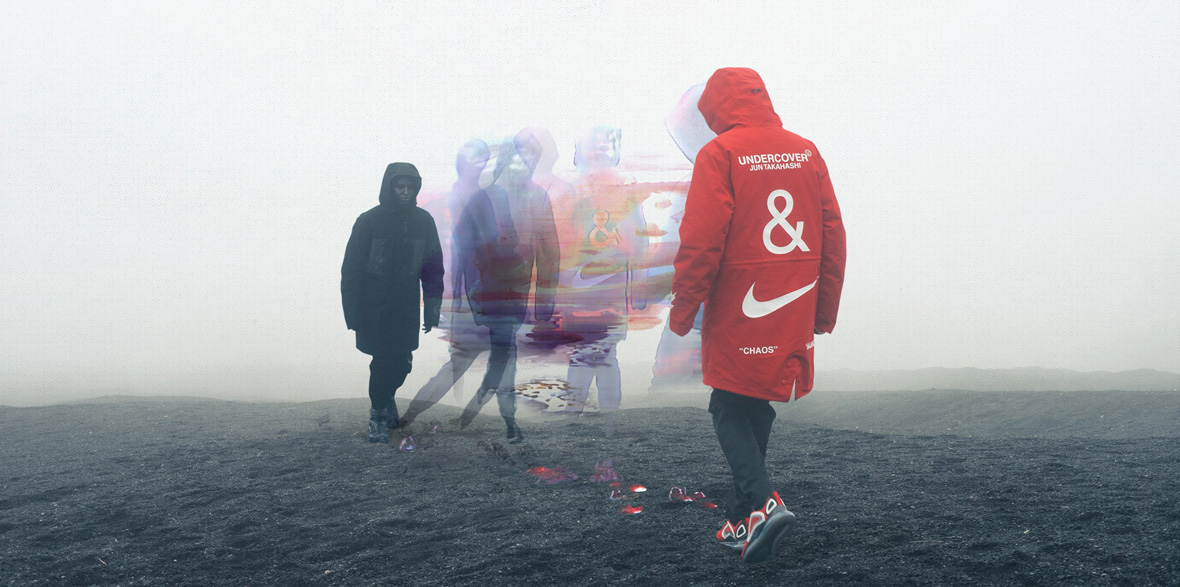
Kishi primarily uses a type of neural network called a Generative Adversarial Network, or GAN for short. First conceived of in 2014 by Ian Goodfellow, a GAN actually comprises two networks which compete with each other—hence the ‘adversarial’ in its name. Like a forger making counterfeits, one network generates fake images and tries to trip up the other network into thinking they are real. At the same time, the other network tries to sniff out the counterfeits. By pitting the two networks against each other, they each get smarter as the generated fakes appear more and more realistic—in many cases even fooling the human eye.
Kishi explains that the beauty of this process is that it requires no direct human input. What’s more, since machines cannot strictly ‘see’ like humans do, the GAN learns to represent a single 2D image with 512 different numbers, or dimensions. As a result, what is ultimately created by the GAN is on an “unimaginable spectrum,” even from his own point of view.
Yuma 在创作时主要使用一种名为 “生成对抗网络(Generative Adversarial Network)” 的神经网络系统,简称 GAN。GAN 由 Ian Goodfellow 于 2014 年首次提出,顾名思义,通过让两个神经网络相互博弈的方式进行学习。好比是一场真假辨别大会,两个网络分别饰演仿制品作者和鉴定师的角色,仿制品作者根据目标真品的样子不断进行临摹,尝试让鉴定师信服;与此同时,鉴定师则尝试不断找出仿制品作者的不足并令其进行反复修改。两个网络在相互博弈的过程中,它们都会不断进行学习,变得越来越“聪明”,所临摹的仿制品也会越来越逼真,很多时候甚至会骗过人们的眼睛。
Yuma 解释说,这个过程的魅力在于它不需要直接的人工投入,从创作者的角度出发,GAN 系统最终创造的成品是 “超越想象” 的。不过,毕竟机器无法像人类肉眼一样直观地 “看”,因此 GAN 系统要学习 512 种不同的颜色或维度,才能呈现单个 2D 图像(世界上共有 1600 万余种颜色,但对于平面图像而言,512 种颜色是足够的)。

For Kishi, AI can offer a completely new, unadulterated look at reality. Humans have biases, expectations, and preconceptions; it’s very hard for a person to break out of their normal mode of seeing—what he calls the “impossibility of pure vision.” With its unbiased view, Kishi muses that AI may present new insights to solve the countless challenges facing humanity today.
His work often features a human form, a nod to humans who may one day use AI as a tool. Citing a book by Andy Clark titled Natural-born Cyborgs, he notes that humans have always wielded technology in unexpected ways, even augmenting their bodies. “From a higher perspective, we do not understand all its mechanisms, though our arms, legs, or heart are indeed part of ourselves… wristwatches used by businessmen could be said as a part of their skin; for teenagers, a smartphone could be defined the same,” Kishi explains.
对于 Yuma 来说,AI 可以呈现一种没有杂质的现实世界视角。人类对待事物常常会有偏颇、期望和成见,一个人看问题的角度很难摆脱其一贯的方式,即所谓的 “纯粹的视觉是不可能存在于人类身上”。他畅想,既然 AI 能呈现真正客观的角度,说不定能用来解决当今人类面临的无数挑战。
Yuma 的作品设定通常为人物,寓意未来世界种以 AI 为生活工具的人类。他引用安迪·克拉克(Andy Clark)在《天生的机器人》(Natural-born Cyborgs)一书中所提到的内容 —— 人类一直以各种出人意料的方式来利用科技,甚至用来进化自己的身体。“站在更高的角度来看,虽然我们的手臂、双腿或心脏确实是自己身体的一部分,但我们对于身体机制的理解并不完整……我会说企业家手上戴的手表是他们皮肤的一部分;智能手机之于青少年来说,也是他们身体的一部分。”Yuma 解释说。
Our relationship to everyday objects was a common motif in the work of 20th century French-American artist Marcel Duchamp, one of Kishi’s influences. Duchamp rejected the notion that art must be beautiful to the eye and implored the viewer to shift their perspective of what art is. Kishi explains, “If I were to borrow Duchamp’s words, that would be ‘Art is choice.’ Since the beginning, I have believed that no matter how great an AI crafts a piece of work, it would never be able to stand by itself without the choices made by humans.”
The value of choice in Kishi’s piece The Bride’s Clothed Up By You, Even is one of the clearest showcases of Duchamp’s influence. In the installation, Kishi’s AI mutates a rotating bouquet of flowers into a woman and back again in a loop. When a viewer sees a frame they like, they can stop the generation of images, which ultimately becomes an act of curation. The title of the piece plays off of the 1915-1923 work by Duchamp The Bride Stripped Bare By Her Bachelors, Even. Like Duchamp, Kishi is a fan of wordplay; In this project, he plays on the Japanese term, “bride” which is hana-yome (花嫁) a combination of “flower” and “matron,” the subject matters of this piece.
20 世纪美籍法裔艺术家马塞尔·杜尚(Marcel Duchamp)对 Yuma 的影响很大。在杜尚的作品中,人类与日常物品之间的关系是 一个常见主题,他否定了艺术一定要充满美感的陈旧观念,并希望观众也能扭转对艺术的看法。 Yuma 解释说:“借用杜尚的话来说,‘艺术是一种选择’,我一直以来都认为,无论 AI 能制作出多么出色的艺术品,如果没有人类做出的选择,这些图画甚至没有立足之地。”
Yuma 在作品《The Bride’s Clothed Up By You, Even》中突显了选择的价值,是最能体现杜尚对他影响的作品。在这个艺术装置中,Yuma 的 AI 装置让一束旋转的花朵变成一位女士,然后又变回花朵最初的样貌。当观众看到喜欢的视觉影像时,他们可以停止图像继续生成,因此作品在每一位观众面前的展览方式都是不一样。作品的标题便是取自杜尚在 1915-1923 年的作品《The Bride Stripped Bare By Her Bachelors, Even》。Yuma 和杜尚一样,喜欢玩文字游戏,在这个项目的名字里,日语 “新娘” 一词为 “hana-yome”(花嫁),为 “花” 与 “已婚女性” 两个词的结合,这正是作品所呈现的两种元素。
无法观看?前往腾讯视频
Kishi’s own story of becoming an artist is an unlikely one. Though his father was an oil painter who received many awards, Kishi explains he did not provide a particularly stable life for his family. Consequently, Kishi’s mother persuaded him to take a stable career path. But the more he immersed himself in science, the more he became interested in expanding his knowledge, which eventually led him to study Deep Learning and its use as a tool in image creation. “In order to research its possibilities, I became an artist; strangely the exact same occupation as that of my father,” he muses.
Yuma 在成为艺术家的道路上其实算是有点阴差阳错。虽然他的父亲是一位曾获得过许多奖项的油画家,但却未能让自己的家人过上稳定的生活。因此,Yuma 的母亲劝说他选择稳定的职业。但在不断深入研究学科的过程中,他便越想扩展自己的知识领域,开始着手于技术在图像创作中的应用。“为了探索这种技术的更多可能性,我选择成为了艺术家,也算是子承父业吧。”他说道。
To what extent do the tools we use shape the choices we make, and vice versa? This question is central to Kishi’s work as he looks to the future, where AI might change the way we see humanity entirely. His hope is that more AI art—made possible by advances in tools like GAN—will emerge to challenge people’s understanding of reality and bring about new perspectives. Each iteration of Kishi’s distorted face or morphing flower is a glimpse into our behaviors and quirks as humans from an unprecedented perspective, and Kishi is constantly at work pushing forward into the unknown. With each image, sound, or video interpreted through the lens of AI, we stand a better chance at achieving a greater understanding of our biases, choices, and imperfections—what it means to be human.
我们使用的工具在多大程度上影响着我们做出的选择?反之也是如此吗?这是 Yuma 在今后的创作上思考的重心,因为 AI 可能会彻底改变我们对自己的看法。他希望通过 GAN 这样的工具,呈现更多的 AI 艺术,挑战人们对现实的理解,激发出新的观点和视角。而无论是扭曲的人脸还是幻变的花朵,每一次变化,都是从前所未有的角度来窥视人类的行径。透过 AI 演绎的图像、声音或视频,我们能够更好地理解自身的偏见、选择和弱点,更好地了解人类自己。而这,便是 Yuma 一直在努力探索的未知领域。
Like our stories? Follow us on Facebook and Instagram.
Website: obake2ai.myportfolio.com
Instagram: @obake_ai
Behance: ~/yumakishi
Contributors: Eugene Lee, Lia Coleman
Chinese Translation: Olivia Li
网站: obake2ai.myportfolio.com
Instagram: @obake_ai
Behance: ~/yumakishi
供稿人: Eugene Lee, Lia Coleman
英译中: Olivia Li

